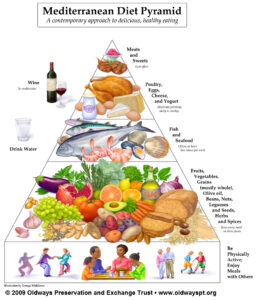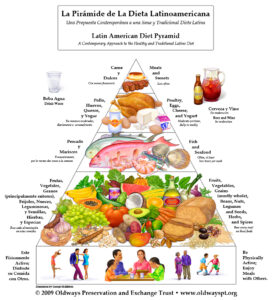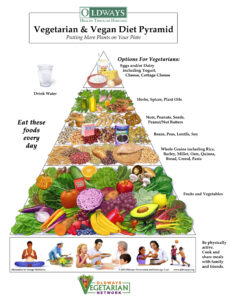
I have yet to hear of a traditional diet from any culture, anywhere in the world that is not substantially healthier than the standard American diet. The more we honor cultural differences in eating, the healthier we will be.
–Michael Pollan, The New York Times

Those words beautifully summarize the mission and work we have been doing at Oldways since its founding in 1990. K. Dun Gifford created Oldways to preserve and promote the hold ways of eating. Our vision was and remains that:
- There is value in preserving cultural and culinary traditions for future generations;
- Heritage foods and ways of eating are delicious, healthy, and nutritionally sound; and
- These traditional or heritage diets are sustainable and planet-friendly.
We like to say, let the old ways be your guide to good health and well being.
Oldways started its Cultural Models for Healthy Eating program by focusing on the Mediterranean Diet the eating pattern that had the most nutrition science research behind it. With the foundation of Ancel Keys Seven Countries Study and copious research that followed, Oldways created the Mediterranean Diet Pyramid with the Harvard School of Public Health in 1993. In 1994, the World Health Organization also endorsed the Traditional Mediterranean Diet Pyramid. We knew the power of the Mediterranean way of eating wasn’t only that it is good for the health of people and the planet or that there is value in preserving the culinary traditions of the Mediterranean region, but also that it is incredibly delicious and pleasurable. In other words, it is a way of eating that people will follow because it is just plain old good!

However, we knew that one size doesnt it all; Mediterranean cultures don’t hold a monopoly on eating well.
Oldways recognized that healthy, sustainable, culturally-valuable, and delicious ways of eating existed around the globe from the Far East to Africa and the Americas. Since the mid-90s, we have explored these traditional diets of different cultures with experts from around the world scientists, chefs, culinary historians, and food writers and created four additional Cultural Models for Healthy Eating.
The Traditional Asian Diet Pyramid was developed in 1995, in cooperation with the Harvard School of Public Health and Cornell. The next year, we introduced the Traditional Latin American Diet Pyramid, and in 1997, the Traditional Vegetarian Diet Pyramid. It took us longer to focus on traditional African eating patterns, but in 2011, with a grant from the Walmart Foundation, we developed Oldways African Heritage Diet Pyramid, representing the culinary traditions of the African Diaspora. And in 2013, we updated the Vegetarian Diet Pyramid with the help of nutrition scientists and dietitians, introducing the Vegetarian & Vegan Diet Pyramid.
While it is true one size doesn’t it all, and that there are wonderful differences regional identities among the many Cultural Models for Healthy Eating, it is also true that there are many similarities. It only takes a look at the I’ve Pyramids to see their striking similarities.

Traditional diets the old ways are nearly always plant-based diets. The traditional way of eating around the world, in almost every country or region, puts plants at the center of the plate: vegetables, fruits, whole grains, beans and other pulses, tubers, herbs and spices, nuts and seeds, and healthy oils or fats. Foods from animals fish and seafood, cheese, yogurt and other dairy, poultry, and red meat are still part of an overall healthy traditional diet, just in smaller quantities (of course with the exception of vegan and vegetarian diets).

A perfect example of the similarities among different Cultural Models for Healthy Eating is rice and beans. Cultures around the world enjoy rice and beans as standard fare. Pasta fagioli or minestrone in the Mediterranean. Dal with rice in India. Jollof rice with black-eyed peas in West Africa. Black beans and rice in Brazil. Brown rice and red beans in the Caribbean. Chinese rice with mung beans in China. Hopping John black-eyed peas and rice in the Carolinas and other southern states.
While these global similarities in food choices are what support good health, the differences among traditional diets are what make each region or country special: the preparations, the herbs and spices, the ingredients/accompaniments. The similarities are simple: traditional ways of eating call for real foods, real whole foods, mostly from plants. Another Michael Pollan quote his most famous says it all: Eat food. Not too much. Mostly plants.
Sara Baer-Sinnott, Oldways President





